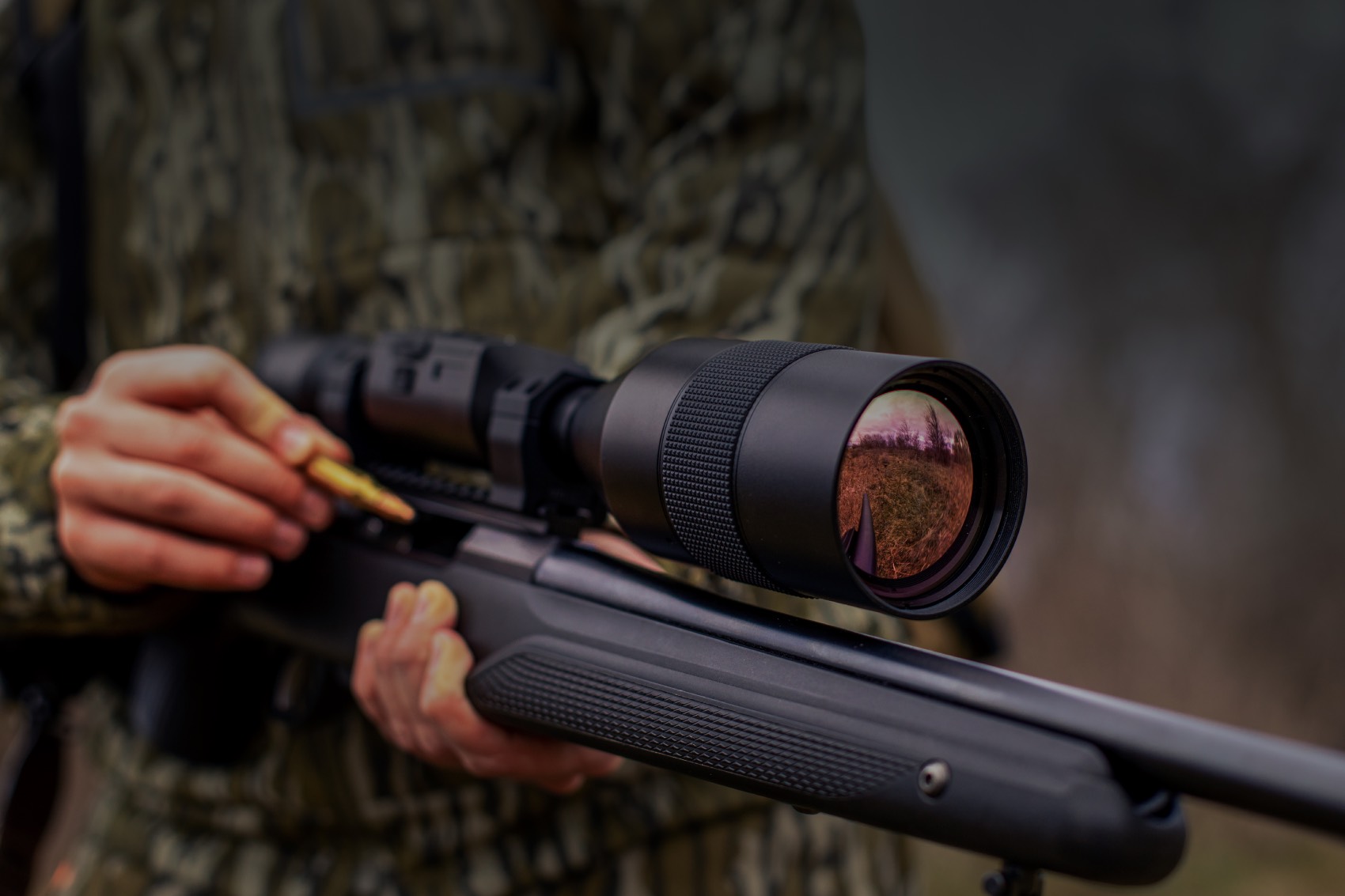
Austin Delano
Consistent Predator Hunting Pays Off
The smell of a fresh cut hayfield grabbed my attention. The familiar scent brought back instant thoughts and a couple of vivid memories, hauling square bales in my younger days and calling predators. Obviously one of these is much more enjoyable than the other. Past experience told me these hay fields always held a lot of small rodents and rabbits that predators loved to hunt and in just a day’s time all their cover was gone, and the coyotes and other predators know it. Usually calling predators in the warmer months was hit or miss and seemed much less productive than my set ups in the winter. The temperature and food sources definitely being the biggest difference. I always wanted to hunt these summer hay fields in the cool of the night when predators are more active and out on the hunt for a meal after spending the day in cover and shade. With the advancements in night vision and thermal optics, predator hunting after sundown is much more a reality now. Here are a few tips on making your night hunting safe and successful.
- Know the terrain and landscape. Pick out ideal set up areas in advance during daylight
- Sight in, practice and be familiar with your firearm, gear and optics
- Identify target animals
- Avoid areas with un-natural light sources
- Communicate with landowners and neighboring farms
- Pick out landmarks and distance/yardage for night time accuracy
- Use an appropriate caliber for the target animal and area to be hunted
Boosting small game populations can work by effectively managing the constant threat posed by predators. Turkeys, rabbits, quail, and fawns and other desirable game remain vulnerable to predators, which are currently in record numbers in many regions. While trapping is a highly efficient tool for wildlife managers, it's important to remember that hunting predators not only sharpens your weapon-handling skills but also offers an excellent late-winter activity when food sources may be scarce, and predators of all sizes are more active and visible.
Nighttime Predator Hunting Equipment
High quality equipment, such as firearms and optics, can significantly enhance the predator hunting experience. One game-changing tool for predator hunters is the ATN X-Sight 4K Pro, a day/night scope that provides crystal-clear daytime images and outstanding night vision capabilities, especially when paired with the infrared illuminator. Predators like bobcats, coyotes, and raccoons are notably more active after sunset, making it advantageous to capitalize on the cover of darkness for hunting during their prime hours. The ATN X-Sight 4K Pro offers a host of features to boost accuracy across various firearms and allows you to digitally record your hunts, whether in daylight or darkness.
Wildlife feeders, crop land and food plots tend to attract a wide variety of non-game animals, including small predators that can significantly impact any nesting birds such as quail, waterfowl, and turkey. Raccoons, opossums, skunks, and even foxes are frequent visitors to feeders. To address this issue, consider setting up a ground blind within a suitable shooting distance from your feeders and employ trail cameras to monitor predator activity in the vicinity. In just one night of hunting, you can reduce the number of these pests. A smaller caliber rifle equipped with the ATN X-Sight 4K Pro proves ideal for this purpose. The presence of fewer small varmints will likely lead to more consistent usage of your feeders by the wildlife you are managing for.
Calling Setups for Nighttime Hunts
Coyotes, bobcats, and foxes are primarily nocturnal hunters and movers. Calling setups, either through electronic calls or mouth calls, can be highly effective in luring these predators into the open after sundown. Crop fields, pastures, and large food plots offer excellent settings for these setups. Nighttime calling allows you to position yourself in areas where you might be visible during daylight hours and leverage the cover of the night and your ATN optics to your advantage. Keep in mind wind direction, which, much like with deer, is crucial when calling for coyotes. A wind hitting you in the back and blowing your scent into thickets and woods will alert predators and most likely make for a busted set up. Calling set ups should be done in areas where you are familiar with the terrain and any possible areas to avoid. Firearms with calibers like .223, .22-250, and .243 are very common and easy to find ammo for, pair these with an ATN Thor Thermal scope and you have a lethal predator weapon. Using shooting sticks ensures the most accurate shots when calling up predators since they sometimes approach from unexpected directions, requiring quick yet precise shot placement. As with any form of hunting, always familiarize yourself with your state's rules and regulations regarding nighttime predator hunting.



























